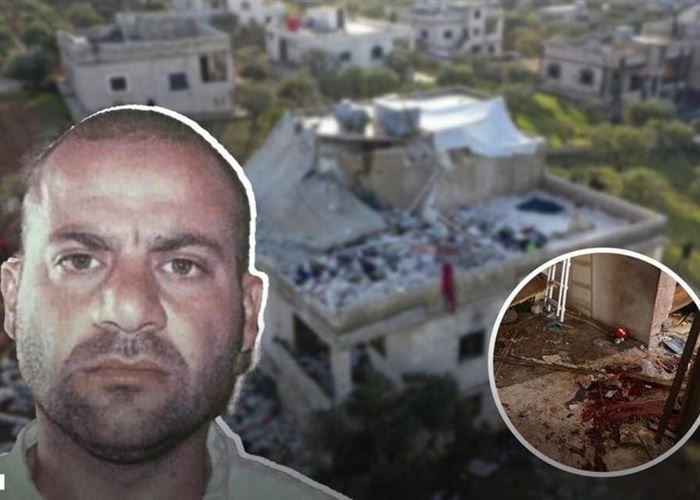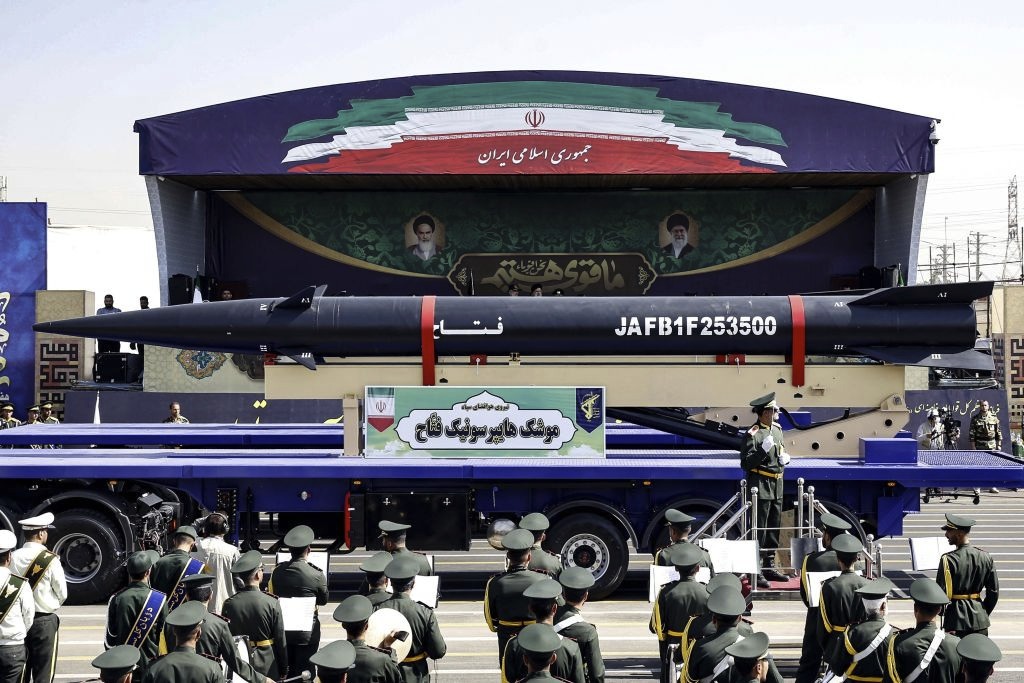Second Islamic State Leader Killed in Hayat Tahrir al-Sham Territory
Aaron Y. Zelin/The Washington Institute/February 04/2022
مقتل الزعيم الثاني لتنظيم «الدولة الإسلامية» في منطقة «هيئة تحرير الشام»
هارون ي. زيلين/معهد واشنطن/04 شباط/2022
تحليل موجز
لتسليط الضوء على نوايا وقدرات «هيئة تحرير الشام» التي تدير محافظة إدلب، يجب على إدارة بايدن توضيح علاقاتها مع «الهيئة»، بما في ذلك أي تعاون في مجال مكافحة الإرهاب.
في الثاني من شباط/فبراير، نفذت القوات الخاصة الأمريكية عملية استهدفت زعيم تنظيم «الدولة الإسلامية» («داعش») أبو إبراهيم الهاشمي القرشي في بلدة أطمة بمحافظة إدلب بالقرب من الحدود مع تركيا. وكان الزعيم السابق للمنظمة، أبو بكر البغدادي، قد قُتل في عملية مماثلة في بلدة باريشا المجاورة في تشرين الأول/أكتوبر 2019. وتسيطر على هاتين المنطقتين جماعة جهادية منافسة هي «هيئة تحرير الشام»،التي انشقت عن تنظيم «الدولة الإسلامية» في نيسان/أبريل 2013 وبعد ذلك قطعت روابطها بتنظيم «القاعدة» في تموز/يوليو 2016.
وعلى مدى السنوات القليلة الماضية، كانت «هيئة تحرير الشام» تحاول إقامة نظام حكم في شمال غرب سوريا من خلال “حكومة الإنقاذ السورية” التكنوقراطية التابعة لها. وقد انطوى جزء من مشروع الحكم هذا على بناء “جهاز الأمن العام” للهيئة الذي تمّ الإعلان عنه رسمياً في عام 2020 ولكنه كان ناشطاً بشكل أولي منذ سنوات.
وركزت العديد من الإعلانات الصادرة عن “جهاز الأمن العام” على اعتقال خلايا تنظيمي «داعش» و «القاعدة» ونظام الأسد، على الرغم من الاشتباه في أن عناصره يستهدفون أيضاً نشطاء يعارضون الحكم الاستبدادي للجماعة الأم. ومنذ أن تبنت «هيئة تحرير الشام» اسمها الحالي في عام 2017، صرحت عناصر “جهاز الأمن العام” علناً عن تنفيذ 21 هجوماً ضد خلايا تنظيم «الدولة الإسلامية» في مدينة إدلب، وسرمين، وشرقي محافظة حماة، وسلقين، وحارم، وجسر الشغور، وخان شيخون، وتحتايا، وسرمدا، وأبو دالي، ومصيبين، وزردنا، وكفر ناصح، ومجدليا. وتم الإعلان عن الهجوم الأخير في 7 تشرين الأول/أكتوبر 2021، على الرغم من أنه ربما يكون قد تمّ تنفيذ عمليات أخرى ولكن لم يتم الإعلان عنها. ومع ذلك، يبدو أن هذه المساعي الأمنية المكثفة لم تكن كافية لردع الزعيمين السابقين لتنظيم «الدولة الإسلامية» من استخدام أراضي «هيئة تحرير الشام» كقاعدة، على الرغم من امتناع تنظيم «داعش» منذ فترة طويلة عن نشر أي معلومات حول أنشطته في إدلب.
في غضون ذلك، تشير بعض التقارير إلى أن «هيئة تحرير الشام» أغلقت الطرق المؤدية إلى الموقع حيث تمّ تنفيذ الغارة الأمريكية في الثاني من شباط/فبراير، مما أثار تساؤلات حول ما إذا كانت الجماعة على علم مسبق بالعملية أو حتى وفّرت معلومات استخباراتية مكّنت شنّها. تجدر الملاحظة أن «هيئة تحرير الشام» لم تتدخل في الغارة الأمريكية التي استهدفت البغدادي عام 2019، على الرغم من عدم ظهور أي دليل على علم الجماعة بمكان وجوده.
وعلى نحو منفصل، أسفرت الهجمات الأمريكية بالطائرات المسيرة عن مقتل عدد من شخصيات «القاعدة» في منطقة إدلب منذ عام 2015. ويعتقد العديد من أنصار التنظيم أن هذه الهجمات تحققت بفضل تزويد «هيئة تحرير الشام» معلومات استخبارية إلى تركيا والولايات المتحدة. ورغم عدم بروز أي دليل علني على هذه الاتهامات، إلا أن الأدلة الظرفية تشير إلى أنه قد يكون هناك بعض الحقيقة في ذلك.
وكسياق لهذه القضايا، سعت «هيئة تحرير الشام» وزعيمها أبو محمد الجولاني إلى حشد الدعم من الولايات المتحدة وحكومات غربية أخرى خلال العام أو العامين الماضيين في محاولة لشطبهما من قائمة الإرهاب. وعلى الرغم من أن ذلك لم يتحقق بعد، إلا أن مبادراتهما لم تقع على آذان صماء، على الأقل خلال إدارة ترامب. ففي مقابلة ضمن برنامج “فرونت لاين” في ربيع 2021، أشار المبعوث الأمريكي الخاص السابق إلى سوريا، جيمس جيفري إلى أنه تواصل مع الجماعة عبر قنوات خلفية أثناء خدمته في وزارة الخارجية خلال رئاسة ترامب. كما أشار إلى أن واشنطن أوقفت استهداف الجولاني في آب/أغسطس 2018. ومن وجهة نظره، كانت «هيئة تحرير الشام» بمثابة “أقلّ الخيارات سوءاً في إدلب، التي هي من أهم الأماكن في سوريا، وأصبحت من أهم الأماكن الآن في الشرق الأوسط”. في المقابل، كان المسؤولون في إدارة بايدن متكتمين نسبياً بشأن سياستهم تجاه «هيئة تحرير الشام».
وخلال الفترة المقبلة، سيكون من المفيد أن توضح الحكومة الأمريكية علاقاتها (أو عدمها) مع «هيئة تحرير الشام» وأن تعلن ما إذا كانت تنظر إلى الجماعة على أنها شريك في مكافحة الإرهاب – بغض النظر عن مدى تشوّه صورتها كوحدة سابقة تابعة لتنظيمي «الدولة الإسلامية» و «القاعدة» ومعروفة بارتكابها انتهاكات في مجال حقوق الإنسان خلال الحرب في سوريا. وإذا لم يكن للجماعة أي علاقة في الغارة على القرشي، فستُطرح أسئلة رئيسية حول مدى كفاءة أجهزتها الأمنية نظراً إلى اتخاذ زعيمين متتاليين لتنظيم «الدولة الإسلامية» مقراً لهما في أراضيها.
هارون زيلين هو زميل “ريتشارد بورو” في معهد واشنطن، وباحث زائر في “جامعة براندايز”.
*هارون ي. زيلين هو زميل “ريتشارد بورو” في معهد واشنطن لسياسة الشرق الأدنى حيث يتركز بحثه على الجماعات الجهادية العربية السنية في شمال أفريقيا وسوريا، وعلى نزعة المقاتلين الأجانب والجهادية الإكترونية عبر الإنترنت.
Second Islamic State Leader Killed in Hayat Tahrir al-Sham Territory
Aaron Y. Zelin/The Washington Institute/February 04/2022
To shed light on the intentions and capabilities of the jihadist group that runs Idlib province, the Biden administration should clarify its relations with HTS, including any counterterrorism cooperation.
On February 2, U.S. Special Forces conducted an operation targeting Islamic State (IS) leader Abu Ibrahim al-Hashimi al-Quraishi in Atimah, an area of Idlib province near the border with Turkey. The organization’s previous leader, Abu Bakr al-Baghdadi, was killed by a similar operation in the nearby town of Barisha in October 2019. Both of these areas are controlled by rival jihadist group Hayat Tahrir al-Sham (HTS), which split from IS in April 2013 and later broke ties with al-Qaeda in July 2016.
Over the past few years, HTS has been attempting to establish a polity in northwest Syria via its technocratic Syrian Salvation Government. Part of this governance project has involved building up the group’s General Security Service (GSS), which was formally announced in 2020 but had been operating in proto-form for years.
Many of the announcements issued by GSS have focused on arrests of IS, al-Qaeda, and Assad regime cells, though its operatives are also suspected of targeting activists who oppose their parent group’s authoritarian rule. Since HTS adopted its current name in 2017, GSS elements have publicly announced twenty-one raids against IS cells in Idlib city, Sarmin, eastern Hama province, Salqin, Harem, Jisr al-Shughour, Khan Sheikhoun, Tahtaya, Sarmada, Abu Dali, Mseibin, Zardana, Kafr Naseh, and Majdaliya. The most recent raid was announced on October 7, 2021, though other operations may have been conducted but not publicized. Apparently, however, these intensive security efforts were not enough to deter the past two leaders of IS from using HTS territory as a base, though IS has long refrained from publicizing any information about its activities in Idlib.
Meanwhile, some reports indicate that HTS blocked off the roads leading to the site of yesterday’s U.S. raid, raising questions about whether the group knew of the operation in advance or even provided intelligence that enabled it. In 2019, HTS did not interfere with the U.S. raid against Baghdadi, though no evidence has emerged that the group had any knowledge of his whereabouts.
Separately, U.S. drone strikes have killed a number of al-Qaeda figures in the Idlib area since 2015. Many of the organization’s supporters believe these strikes were enabled by HTS providing intelligence to Turkey and the United States. Although no public proof of this accusation has come to light, circumstantial evidence suggests there may be some truth to it.
As context for these issues, consider that HTS and its leader, Abu Muhammad al-Jawlani, have sought to garner support from the United States and other Western governments over the past year or two in a bid to get themselves removed from terrorist lists. Although that has yet to occur, their overtures did not fall on deaf ears, at least during the Trump administration. In a spring 2021 interview with Frontline, former U.S. special representative James Jeffrey noted that he had engaged with the group via backchannels while serving in President Trump’s State Department. He also noted that Washington had stopped targeting Jawlani in August 2018. In his view, HTS was “the least bad option of the various options on Idlib, and Idlib is one of the most important places in Syria, which is one of the most important places right now in the Middle East.” In contrast, Biden administration officials have been relatively quiet about their policy toward HTS.
Going forward, it would be useful for the U.S. government to clarify its relations (or lack thereof) with HTS and state whether it views the group as a counterterrorism partner—however tarnished HTS might be as a former IS and AQ affiliate that is known to have committed human rights abuses during the Syria war. And if the group had nothing to do with the raid against Quraishi, then major questions will arise about how competent its security services really are given that two successive IS leaders have been based in its territory.
*Aaron Y. Zelin is the Richard Borow Fellow at The Washington Institute and a visiting research scholar at Brandeis University.






















